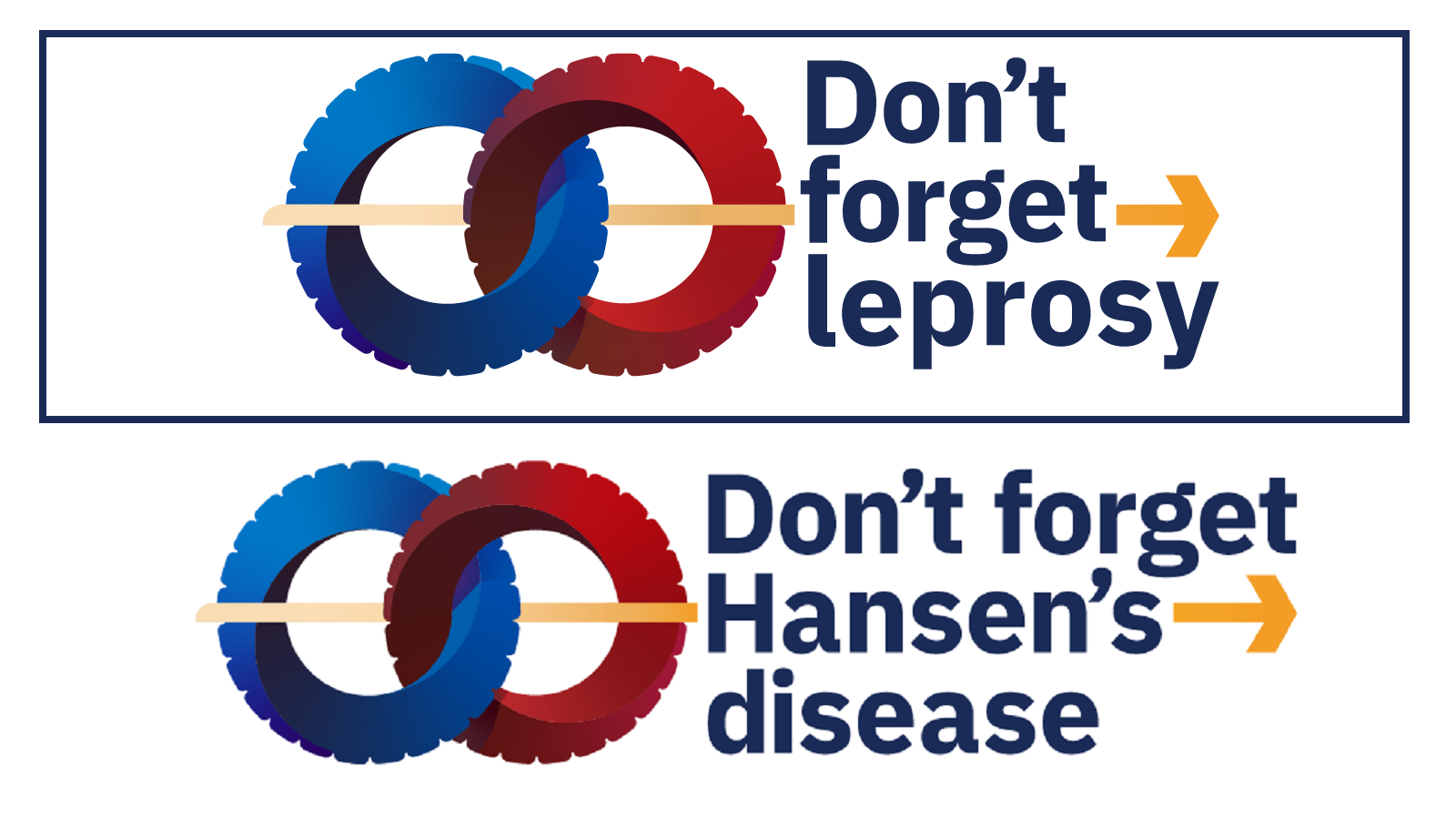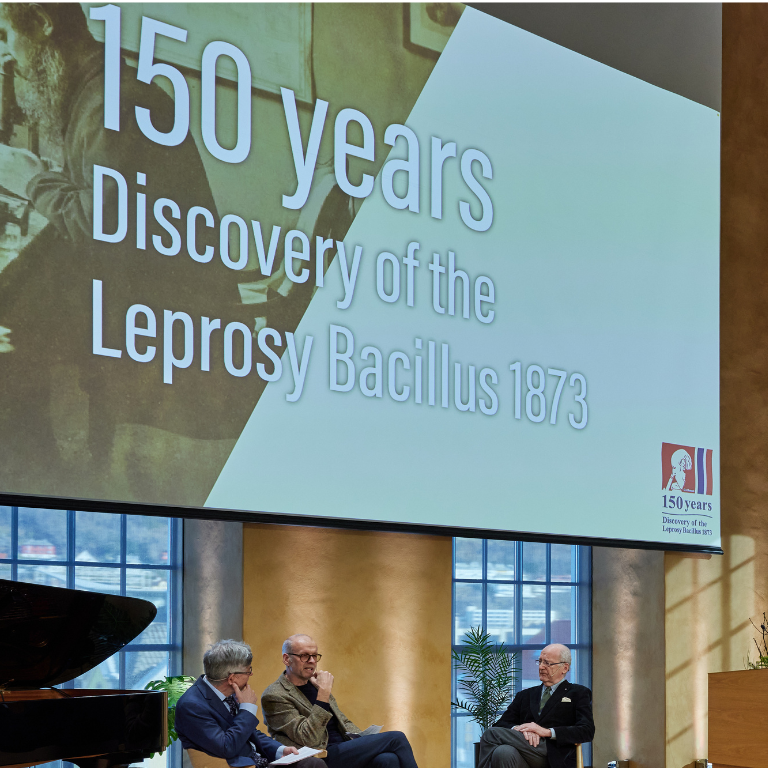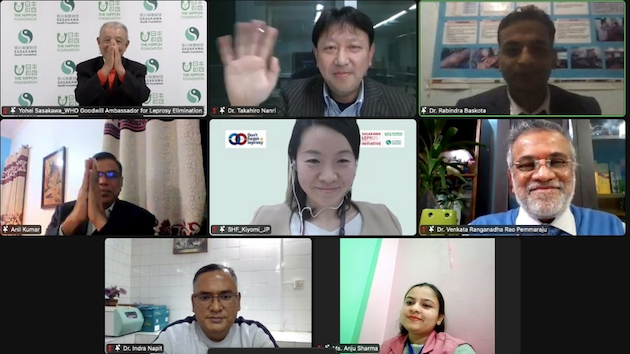The final in a series of 6 webinars of “Don’t forget Leprosy” campaign was held on June 7, 2022 on the theme of “Elimination of Leprosy: Initiatives in the Americas and Africa”.
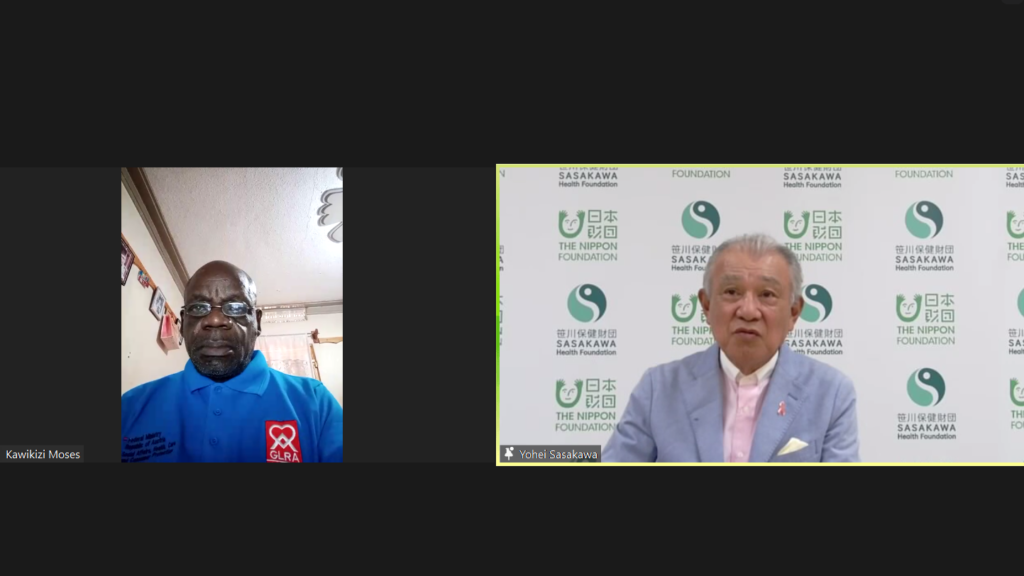
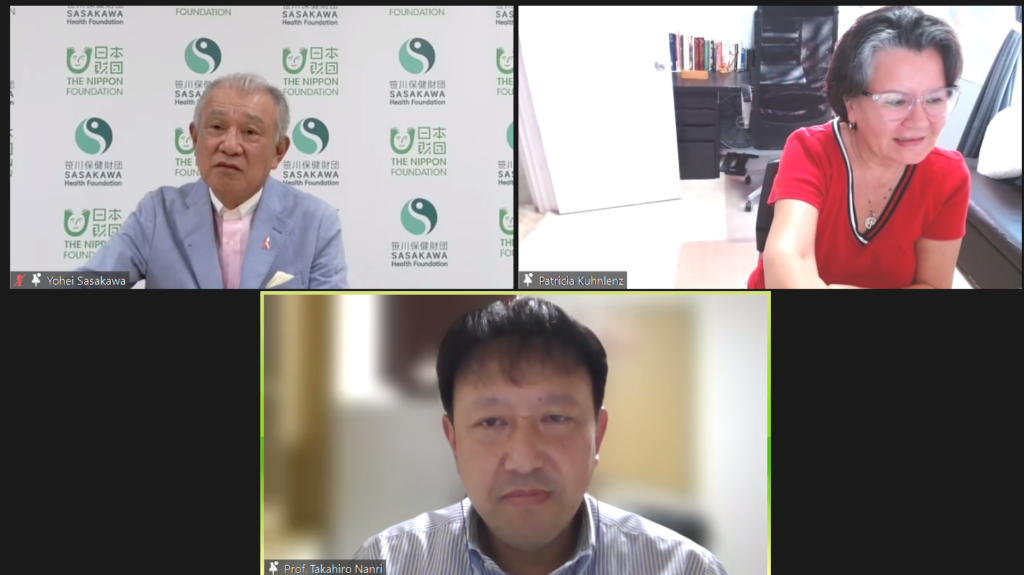
This is the coverage of Inter Press Service (IPS) on this event. To read the article on the IPS website, click here.
Nairobi, Jun 7 2022 (IPS) – When Yohei Sasakawa visited a remote village in Cameroon, he found 23 people living there.
Of the 23, three were affected by leprosy and were shunned by their families. Even in such a small community, people experience stigma and discrimination because of leprosy.
Yet this is not a unique story, says Sasakawa, the WHO Goodwill Ambassador for Leprosy Elimination. This is the story of persons affected by leprosy, where there are more than 100 laws globally that discriminate based on the disease.
In his journey to at least 122 countries, he found that the story of persons affected by leprosy is characterized by stigma, discrimination, and ostracization.
Against this backdrop, Sasakawa had a message of hope and encouragement during the sixth ‘Don’t Forget Leprosy’ campaign webinar series titled, Elimination of Leprosy: Initiatives in the Americas and Africa.
He said that eliminating leprosy was “in its last mile. A sustained push is much needed in spite of and because of ongoing challenges including COVID-19 pandemic as well as the myths and misconceptions around leprosy”.
“India has the highest number of leprosy cases, but they have also targeted to eliminate leprosy by 2030. This is an ambitious goal. I am encouraged by ongoing efforts, commitment, and passion to eliminate leprosy.”
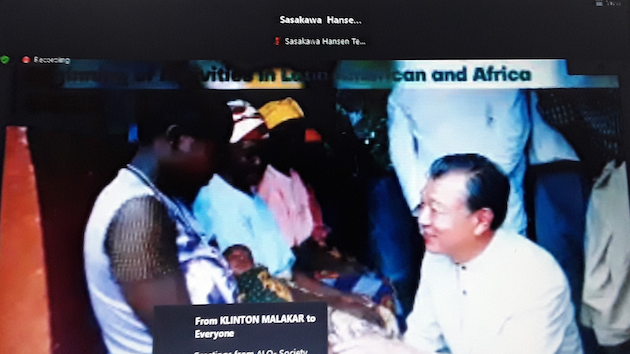
With the universality of leprosy’s challenges in mind, under the Sasakawa Leprosy Initiative, the WHO Goodwill Ambassador, the Nippon Foundation, and Sasakawa Health Foundation work in a coordinated approach to achieve a leprosy free world.
Dr Carissa Etienne, Director, Pan American Health Organization, regional office for the Americas of WHO, stressed the need to sustain the fight to achieve zero leprosy cases by 2030. She called for a doubling of efforts. The Global Leprosy Strategy 2021 to 2030 is both a health and economic strategy because it aims at promoting Sustainable Development Goals (SDGs).
The webinar provided a platform for health officials, NGOs, and representatives of organizations of persons affected by leprosy. Participants heard how countries in the Americas and Africa are stepping up prevention initiatives in keeping with WHO guidelines to accelerate the annual decline in new leprosy cases.
Experts stressed that innovative approaches are much needed to sustain leprosy case detection, contact tracing, and treatment, especially against the backdrop of COVID-19, which continues to shift attention from the disease.
Speakers stressed that a WHO-recommended regimen of timely screening and treating eligible contacts with single-dose rifampicin was vital. When the single dose is given as post-exposure prophylaxis to contacts of newly diagnosed patients, it results in a 50 to 60 % reduction in the chances of developing leprosy over the next two years.
WHO recorded a total of 202,185 new leprosy cases globally in 2019. India, Indonesia, and Brazil register the highest number of new leprosy cases – more than 10,000 cases each.
Worldwide, 13 other countries reported 1,000 to 10,000 cases each. The Americas recorded 29,936 new cases, with Africa following closely with 20,205.
The webinar was held in line with the Global Leprosy Strategy for 2021-2030, on track with the new road map on neglected tropical diseases. New cases must reduce to about 63,000 globally.
Dr Carmelita Ribeiro Filha Coriolano from the Brazilian Ministry of Health spoke extensively about the spread of new cases in the Americas in 2020.
Coriolano provided a detailed sociodemographic profile of new leprosy disease cases and physical disability indicators picked up by the Department of Chronic Conditions and Sexually Transmitted Infections Health Surveillance Secretariat. She noted that Brazil recorded the highest new cases of leprosy in 2021.
In Africa, too, the cases remain a cause of concern.
“In 2015, leprosy was eliminated as a public health concern in Angola. But the disease is still very much a priority because the most recent data shows 797 new cases were detected,” says Dr Ernesto Afonso, National Leprosy Program Coordinator, Ministry of Health in Angola.
Dr Joseph Ngozi Chukwu, medical advisor, German Leprosy Relief Association in Nigeria, updated the epidemiological situation, leprosy case management, achievements, and lessons learned.
“Over 30,000 persons are estimated to be living with leprosy-related disabilities across Nigeria,” he said.
Lucrecia Vasquez Acevedo, President, Felehansen-National Federation of the Associations of the Persons Affected by Leprosy in Colombia, said the stigma continued.
“We cannot forget about leprosy because of the myths, misconceptions, and lies created around leprosy. It is important to teach other people the truth about leprosy. During the pandemic, we learned how to use technology to teach and overcome the challenges of access to information presented by the pandemic,” says Acevedo, suggesting that the same should apply to leprosy.
Professor Takahiro Nanri, Executive Director, Sasakawa Health Foundation, facilitated a question-and-answer session, providing an opportunity to respond to questions from the participants. During the session, issues of myths, misconceptions, and stigma arose as they remained an obstacle to eliminating leprosy.
IPS UN Bureau Report






